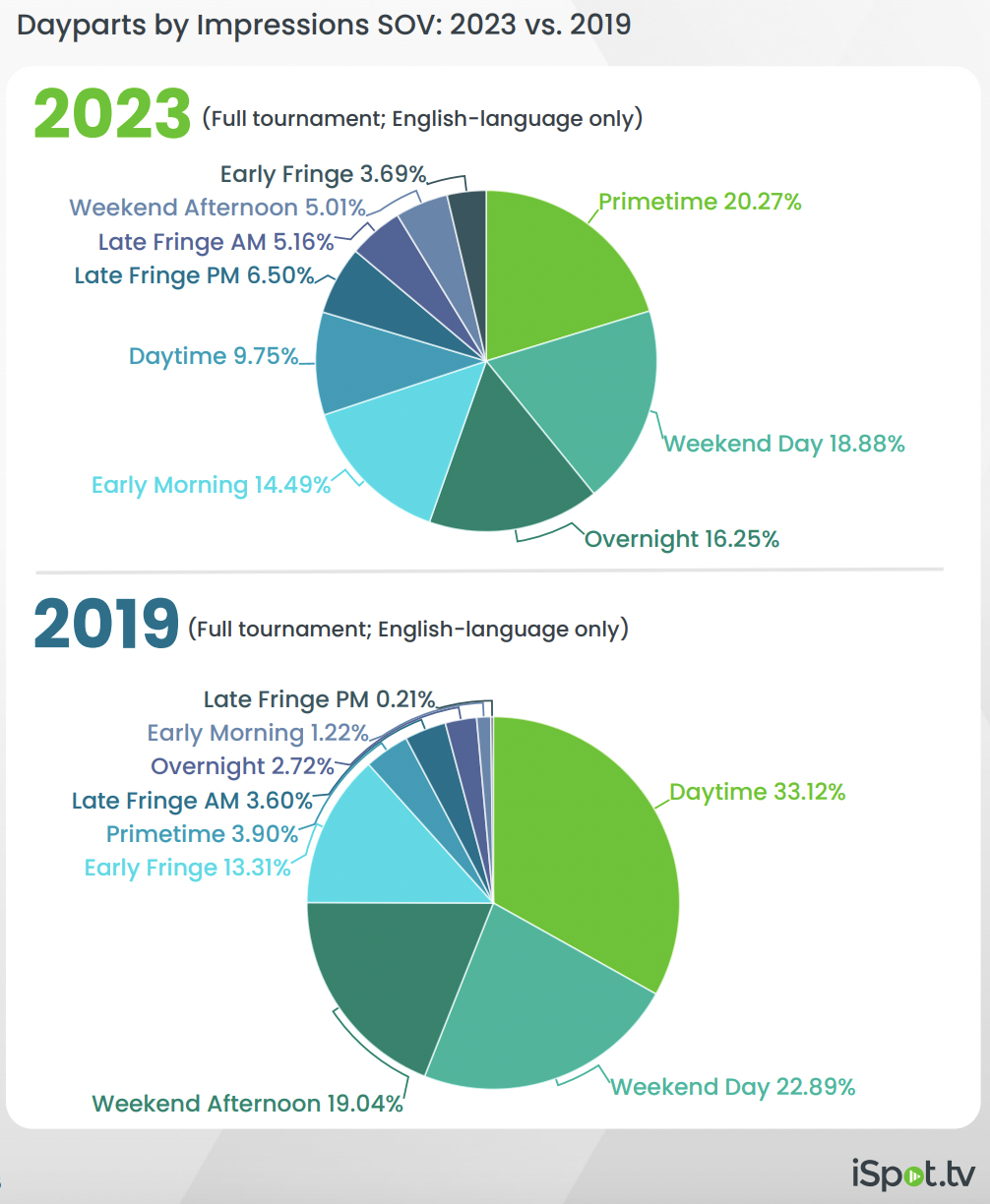Women’s World Cup Grows Advertisers Amid Time Zone Juggle
Momentum around women’s sports has grown significantly in recent years, and TV has been a big part of that shift.
After years of having NCAA Women’s Basketball Tournament games at odd times and shuttled out to streaming, this year’s event featured all games on national TV and the Final Four included a simulcast. WNBA viewership is up nearly 50% year-over-year on ESPN platforms. And data from Tubular Labs shows that sports like softball are seeing social video views jump by 24% or more vs. last year.
Advertisers are taking notice as well. Business Insider recently used iSpot (and other) data to show how brands are increasing investment in women’s sports and are seeing a greater return as well. With the U.S. Women’s National Team aiming for a three-peat in this year’s World Cup, brands were clearly pretty interested in jumping on the bandwagon.
New data from iSpot shows that they clearly did, too. Through the entire 2019 FIFA Women’s World Cup, there were 242 advertisers on national TV. But that number jumped to 294 this year through the quarterfinals alone — even with the U.S. bowing out earlier than most predicted.
Also of note there: TV ad impressions were far more spread out among top advertisers in 2023 than we saw in 2019, when impressions were concentrated with a handful of top advertisers (including Wells Fargo, which had about 10%). This year’s event was an opportunity for brands to extend their previous efforts growing women’s sports investments as well. Advertisers like Subway and Ally were among many to feature women’s players in TV ads, and iSpot Creative Assessment data showed every World Cup-themed ad receiving a “Love It” reaction from its survey panel featured at least one player.
The positives have also had to balance themselves out with some challenges, however.
With the 2023 World Cup hosted by Australia and New Zealand, time zone issues were a major challenge as Fox had to balance reasonable match times with when U.S. TV audiences could actually tune in. While Fox was able to put a priority on primetime — through the quarterfinals, 22% of TV ad impressions were delivered in primetime this year, vs. just 4% for the full 2019 tournament — plenty of matches also took place virtually overnight.
As you’ll notice above, overnight ad impressions jump from 3% to 16% year-over-year, while early morning grows from 1% to 14%. So while the World Cup certainly had more energy behind it and more brands appearing during matches, the time zone issues also make it more difficult for advertisers to get significant reach like they would with a more feasible location (for reference, the 2019 World Cup took place in France).
These time zone challenges are coming up more and more for international sporting events, however, as governing bodies like FIFA and the IOC become more inclusive of the entire globe and not so concentrated on the U.S. and Western Europe. Audiences in the United States have probably gotten used to increasing time zone issues lately as well, given recent Olympic and World Cup events in Qatar, Russia, China, Japan and South Korea.
There will be a bit of a course-correction for U.S. networks and advertisers coming soon, however. The 2026 Men’s World Cup will be jointly hosted by The United States, Mexico and Canada, and Los Angeles hosts the 2028 Summer Olympics. The U.S. and Mexico also submitted a joint bid to host the Women’s World Cup in 2027, and are up against South Africa, Brazil and a combined Belgium/Germany/Netherlands bid there.


